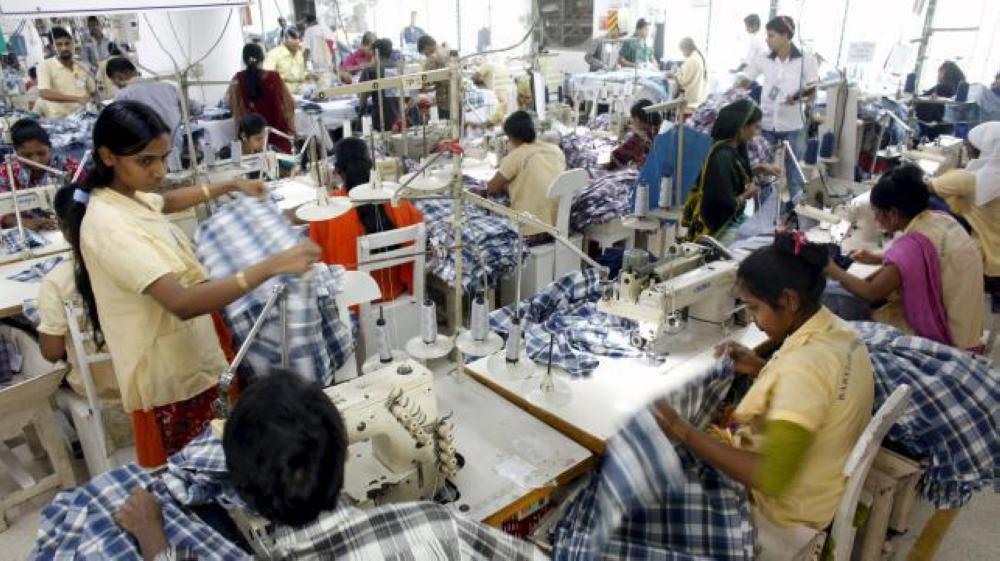Published in Reuters on April 05, 2018

When Ayesha Akhter walks into the factory where she works, the supervisor greets her with a smile and wishes her a pleasant day – a major change after years of physical and verbal abuse from managers in Bangladesh’s $28 billion garment industry.
The seamstress said it is her biggest victory since being elected president in October of the workers’ union at Jeans Factory Limited in Dhaka, amid a push to improve conditions across the global fashion supply chain.
“In all these years, I have heard supervisors yell, verbally abuse, call us prostitutes and slap us behind our heads to work faster,” Akhter, who spends eight hours a day stitching pockets on jeans and shorts, told the Thomson Reuters Foundation.
“Then I became the union president and everything changed. Overnight, I became important.”
Akhter, 28, is among scores of women in Bangladesh standing up to head unions and negotiate with male-dominated management for more pay, safer workplaces and respect on the job.
Bangladesh is the world’s second-largest garment exporter with some 4 million people working in its 4,000-plus factories, nearly 80 percent of them women, campaigners say.
Poor working conditions and low wages have long been a concern in the sector, which suffered one of the worst industrial accidents in 2013, when more than 1,100 people were killed in the collapse of the Rana Plaza complex.
Garment factory workers attempting to set up unions have encountered resistance across the region, with many losing their jobs or being suspended by managements that fear the power of unions, leaders said.
“Freedom of association and collective bargaining are the biggest challenges the industry faces today,” said Nazma Akter, a former child worker and founder of Awaj Foundation, which campaigns for labor rights.
“Without that power, workers are just surviving, not leading normal lives, and it’s almost a crime.”
YOUNG, DYNAMIC WOMEN
Five years after Rana Plaza, one of the region’s strongest movements to organize workers and help them exercise collective bargaining has emerged – led by Bengali women.
The number of registered unions in Bangladesh has increased about fivefold to almost 500 since 2013, according to Jennifer Kuhlman of U.S.-based workers’ rights charity Solidarity Center.
“Many of them are being headed by young, dynamic women who are choosing to lead from the front to bring about change,” said Kuhlman, who heads its Bangladesh programs.
Campaigners estimate that women make up about half of the new factory union leaders.
Although women said their newfound union power had opened their eyes to their rights – from social security benefits to overtime – they fear losing their jobs.
Akhter remembers the “big fight” she had with her husband when she said she was considering standing for president.
“He was mad and upset and clearly told me not to,” said the mother of two. “He was scared and worried about my safety. He relented but we always worry because of what we see and hear.”
It was easy to unionize immediately after the Rana Plaza disaster but activists are now being harassed, workers fired and union meetings disrupted, said Babul Akhter, president of the Bangladesh Garment and Industrial Workers Federation.
“It is difficult and workers are facing a tough time,” said Akhter, whose organization supports workers across 52 unionized factories.
The government cracked down on unions after garment workers in Ashulia, a suburb outside Dhaka, protested the death of a coworker and demanded more wages in December 2016, campaigners said.
In the following four months, almost 40 union leaders were arrested and many union offices were shut down by the government, according to the Solidarity Centre.
Many leaders were given bail but some cases are ongoing and workers fear the repercussions of formally joining unions, activists said.
Bangladesh labor officials were not immediately available to comment although the department’s website lists some of the disputes between unions and factories that it has mediated.
BIG LEADERS
The second floor of a nondescript building in Dhaka houses the office of the Sommilito Garments Sramik Federation, which supports unions and organizes and educates workers across the city, about 80,000 of whom attend its meetings.
Nahidul Hasan Nayan, its general secretary, is buried in paperwork – helping workers submit applications to form unions.
“It is not easy,” said Nayan, adding that 30 percent of workers in a factory must apply for the government to register a union, which takes months.
“Sometimes all it takes for the registration of a union to be rejected is one mismatched signature.”
In another room, women quietly walk in and sit around a table for an evening meeting, after their shifts.
Among them is Shampa Begum, 30, who became president of her factory union a year ago, when workers began organizing themselves and asked her to lead them.
“They all insisted and so I agreed,” she said quietly.
“There were a lot of problems we were facing, from not enough fans to dirty drinking water.”
These problems have now been resolved, said Begum has spent nearly 15 years stitching zips on to pants and earns 7,500 Bangladeshi taka ($90) a month.
Before the union was formed, Begum waited for hours outside the administrator’s office to resolve tiny problems.
“They would ridicule us, asking if we thought we were big leaders, asking for facilities. Now, we are leaders and things get done,” she said.
The women said they have less time for their families but it is a price they are willing to pay to bring about change.
Akhter wakes up at 5 a.m. to cook and take her children to school, works an eight-hour shift, and returns home after dark.
She spends all of her breaks doing union work and is constantly thinking about how to solve factory problems.
“It is exhausting but God gives me the energy,” she said.
 CPD RMG Study Stitching a better future for Bangladesh
CPD RMG Study Stitching a better future for Bangladesh



